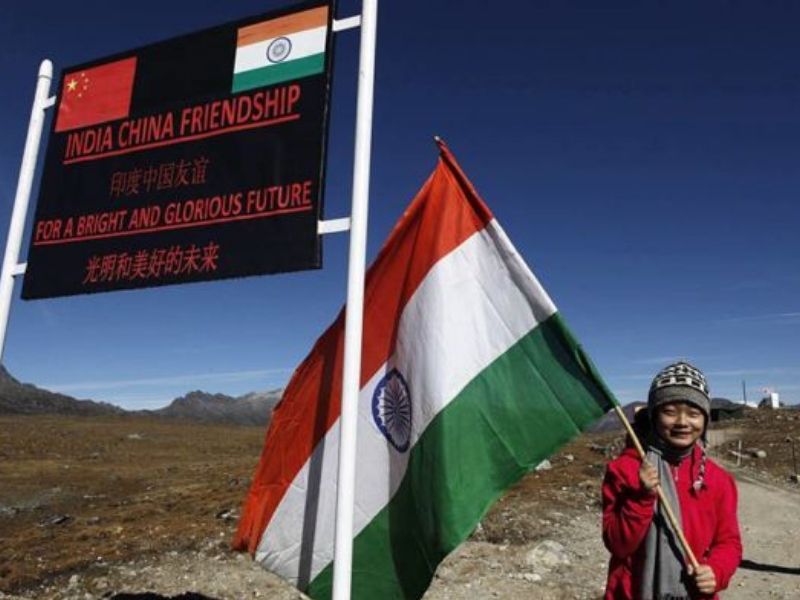The latest troops skirmish in the Galwan River Valley sector of the 3,488 km undemarcated India-China border from the Aksai Chin border which extends from Kashmir in the north-west all the way to Arunachal Pradesh in the north-east, which resulted in the brutal clubbing to death of a colonel and 20 men of the Indian Army on June 15, is a tragic consequence of the egregious failure of successive governments in New Delhi to negotiate a stable border line between the two countries for 70 years. Even the full-scale war in the north-east in 1962 in which over 1,300 under-prepared soldiers of the Indian Army were slaughtered by China’s People’s Liberation Army, and 3,000 taken prisoners failed to energise the procrastinating Delhi establishment, including diplomats of the over-hyped IFS (Indian Foreign Service), to negotiate a settled border with our northern neighbour nation which is reportedly in forcible occupation of 140,000 sq.km of Indian territory in the border region.
The plain truth is that the PRC’s (Peoples’ Republic of China) claims to bits and pieces of the disputed border region are not entirely unmaintainable. It’s a matter of common knowledge that during almost two centuries (1757-1947) of British rule over the Indian subcontinent, “unequal treaties” were forced upon neighbouring countries, including Afghanistan, Burma and Tibet. In particular, in 1914, a unilaterally drawn boundary was imposed upon the then autonomous government of Tibet which was under nominal Chinese suzerainty. At that time when the McMahon Line was drawn separating Tibet and British India, although two representatives of the Chinese republican government were present, they declined to sign the treaty. In the circumstances, the first priority of independent India should have been to amicably negotiate and redraw the borderlines. Yet, despite Sino-India bonhomie of the early Nehruvian years, this opportunity was lost. The price of this egregious failure has been repeatedly been paid in blood by the Indian Army in the 1962 border war and even after that by troops patrolling uncharted territory in sub-zero climatic conditions. In the circumstances, the clash of June 15 was inevitable.
In retrospect it’s shocking that for over half a century, the Delhi establishment adopted an ostrich-like attitude towards the simmering Sino-Indian border dispute. Astonishingly, since the BJP/NDA coalition was swept to power at the Centre in 2014 and again five years later, prime minister Narendra Modi has had 18 one-on-one confabulations with Chinese president Xi Jinping. The long-festering border dispute should have been placed on the agenda and quickly resolved through expeditious give-take negotiations. Redrawing boundary lines in the sparsely, if at all, populated Himalayan heights is by no means a herculean task. Renewed negotiations between Indian and Chinese diplomats should be started right away to demarcate the entire 3,488 km border even at the cost of surrendering some Indian territory.
Meanwhile despite the 20 Indian lives unnecessarily lost in the vicinity of hazy line of actual control (LAC) in the Galwan Valley, the national interest demands the latest incident is acknowledged as a localised skirmish that flared out of control. At a time when our coronavirus pandemic curve is spiking and the Indian economy is struggling to recover lost momentum after the 68-day national lockdown, this is not an opportune moment for debilitated India with an annual GDP of $3 trillion to take arms against PRC with its $13 trillion economy and superior military capability. It’s important to bear in mind that our quarrel is with the unelected 100 million-strong Communist Party of China (CPC) rather than with 1.4 billion Chinese people with whom we have had amicable diplomatic and commercial relations for several millennia.
The best option in the national interest is to redraw Sino-Indian border lines, even at the cost of losing this battle, to win the war. In the long run, we should use our soft power to export freedom and democracy to China by making common cause with Hong Kong, Taiwan, Japan and the growing pro-democracy movement within China, to block and overthrow the brutal, dictatorial CPC whose crimes against the hapless people of China are far worse than its atrocities on the India-China border in the north.
Posted in News


























